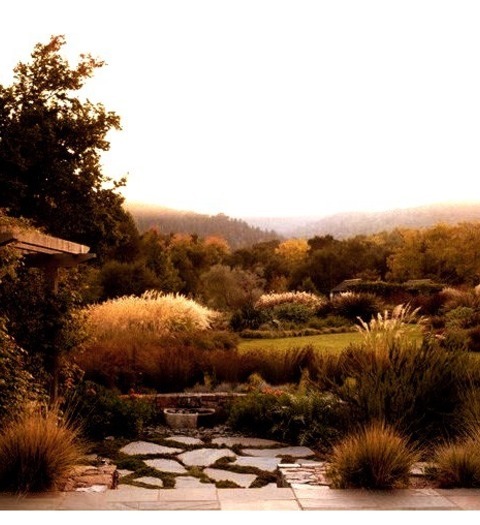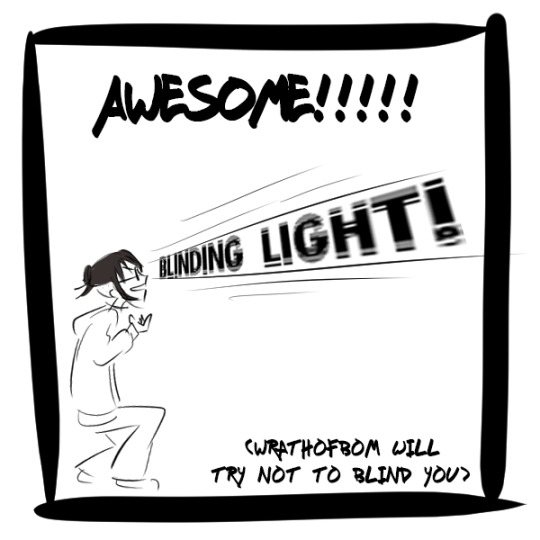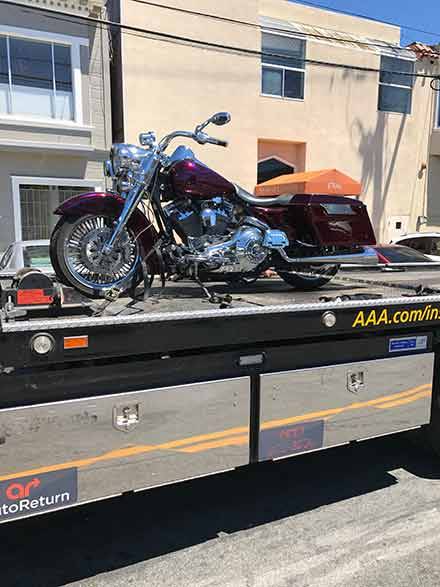#San Francisco Peninsula
Photo

San Francisco Fountain Landscape
Image of a sizable Mediterranean backyard water feature landscape made of concrete pavers. #woodside, #chris jacobson, #san francisco peninsula, #environmental landscaping, #california home +design magazine
#woodside#chris jacobson#san francisco peninsula#environmental landscaping#california home +design magazine
0 notes
Photo

Wine Cellar San Francisco
Example of a mid-sized classic travertine floor wine cellar design with storage racks
#pendant lighting#beer & wine fridges#san mateo#rail tech lighting#custom bar table#san francisco peninsula
0 notes
Text
Redwood City, California's Kevin Granados-Elizalde arrested; What did the Boys & Girls Club of the Peninsula employee do?
Kevin Granados-Elizalde, 25, of Redwood City, San Francisco Peninsula, San Mateo County, California, United States was an employee of the Boys & Girls Club of the Peninsula, a free summer camp program held at Fiesta Gardens International School in San Mateo, San Mateo County. The program is for students in grades between kindergarten and fifth grade.
youtube
View On WordPress
0 notes
Photo

San Francisco Kitchen
a large, modern u-shaped dark wood floor kitchen pantry remodel with a farmhouse sink, shaker cabinets, white cabinets, granite countertops, beige backsplash, subway tile backsplash, paneled appliances, and an island.
0 notes
Photo

Pathway - Rustic Landscape
#Ideas for creating a broad#rustic side yard garden path. south african plant#chris jacobson#california home +design magazine#landscape architecture woodside#gardenart group#stone walkways#san francisco peninsula
0 notes
Photo

Landscape Pathway
#An example of a huge mediterranean side yard stone garden path. outdoor living#sustainability#garden art group#gardenart group#sustainable#san francisco peninsula
0 notes
Text




FRIENDLY REMINDER: @wrathofbom & I will be tabling at
Peninsula Libraries Comic Arts Fest (PLCAF) Kickoff Day
Sat, Apr 6 10-4PM
South SF Library& Parks & Recreation Center
901 Civic Campus Way, South San Francisco
#bay area artists#plcaf#peninsula libraries comic arts fest#comic arts fest#south san francisco#bay area#bay area art#comics#local comics#indie comics
0 notes
Photo

Foyer in San Francisco
An illustration of a large arts and crafts-style entryway with a dark wood floor, gray walls, and a dark wood front door.
#east bay#california contractors#contemporary homes#general contracts san francisco#peninsula south remodeling#san francisco#peninsula north
0 notes
Text





Website : https://www.sfcitytowing.com/
Address : 95 3rd St 2nd Floor, San Francisco, CA 94103
Phone : +1 415-287-3020
We provide towing services for the San Francisco Bay Area and around the peninsula. Some of our services include flatbed towing, light duty towing, medium duty towing, roadside assistance, battery replacement, flat tires, locked vehicles, motorcycle towing, car lockout, battery jump start and more.
#We are San Francisco Bay Area towing. Our trusted service can be seen around the peninsula. Some of our services include flatbed towing#light duty towing#medium duty towing#heavy duty towing#roadside assistance#mobile battery replacement#flat tires#motorcycle towing#car lockout#battery jump start#low clearance towing and more
1 note
·
View note
Photo

San Francisco Kitchen Pantry
#Inspiration for a huge contemporary u-shaped concrete floor and gray floor kitchen pantry remodel with an integrated sink#flat-panel cabinets#blue cabinets#stainless steel countertops#gray backsplash#stainless steel appliances#a peninsula and gray countertops high-end cabinetry#transitional design#italian cabinetry#san francisco cabinets#kitchen#contemporary kitchen
0 notes
Photo

Pantry - Modern Kitchen
#Inspiration for a mid-sized modern single-wall dark wood floor kitchen pantry remodel with an undermount sink#shaker cabinets#white cabinets#quartzite countertops#white backsplash#ceramic backsplash#stainless steel appliances and a peninsula beige walls#pantry#wall art#dark copper pendant lights#san francisco interior design#interior design#pendant lights
0 notes
Photo

Number of Spanish Missions in California and Baja California by county/municipality
by mexidominicarican8
<div class="md"><p><strong>California:</strong></p> <p>The Spanish missions in California formed a series religious outposts or missions established between 1769 and 1833 in what is now the U.S. state of California. The missions were established by Catholic priests of the Franciscan order to evangelize Indigenous peoples backed by the military force of the Spanish Empire. Civilian settlers and soldiers accompanied missionaries and formed settlements like the Pueblo de Los Ángeles. Indigenous peoples were forced into settlements called reductions, disrupting their traditional way of life and negatively affecting as many as one thousand villages</p> <p><strong>Baja California:</strong></p> <p>The Spanish missions in Baja California were a large number of religious outposts established by Catholic religious orders, the Jesuits, the Franciscans and the Dominicans, between 1683 and 1834 to spread the Christian doctrine among the Indigenous peoples living on the Baja California peninsula. The missions gave Spain a valuable toehold in the frontier land, and introduced European livestock, fruits, vegetables, and industry into the region. Indigenous peoples were severely impacted by the introduction of European diseases such as smallpox and measles and by 1800 their numbers were a fraction of what they had been before the arrival of the Spanish.</p> <p><strong>Mexico:</strong></p> <p>The First Mexican Republic secularized the missions with the Mexican secularization act of 1833, which emancipated indigenous peoples from the missions. Mission lands were largely given to settlers and soldiers, along with a minority of indigenous people. Most of the missions in Baja California were abandoned and are currently in ruins. Cities like Loreto, Mulegé, La Paz, and San José del Cabo were formed near/around Spanish missions</p> <p><strong>USA:</strong></p> <p>Many of these missions were restored in the mid 20th century. They have become a symbol of California, appearing in many movies and television shows, and are an inspiration for Mission Revival architecture. Concerns have been raised by historians and Indigenous peoples of California about the way the mission period in California is taught in educational institutions and memorialized. The oldest European settlements of California were formed around or near Spanish missions, including the four largest: Los Angeles, San Diego, San Jose, and San Francisco.</p> </div>
60 notes
·
View notes
Text
The California governor, Gavin Newsom, has announced a plan to transform the state’s oldest prison into a center for rehabilitation, education and training, modeled after Norwegian incarceration systems, which are much less restrictive than US facilities.
Newsom told the Los Angeles Times on Thursday that his goal was “ending San Quentin [prison] as we know it” and working to “completely reimagine what prison means”. San Quentin, located on a peninsula in the San Francisco Bay Area and established in 1852, houses nearly 4,000 people, including hundreds on its infamous death row, the largest in the US, which is on track to be dismantled.
The Democratic governor said that by 2025, he plans to transition the massive penitentiary into a final stop of incarceration before individuals are released, with a focus on job training for trades, including plumbers, electricians or truck drivers, the LA Times reported. His recently released budget proposal includes $20m to start the effort.
“The ‘California Model’ the governor is implementing at San Quentin will incorporate programs and best practices from countries like Norway, which has one of the lowest recidivism rates in the world – where approximately three in four formerly incarcerated people don’t return to a life of crime,” the governor’s office said in a statement on Thursday. The prison will be renamed the San Quentin Rehabilitation Center.

Pictured: Instructor Douglas Arnwine hands back papers with comments to his students at San Quentin state prison in April 2022.
The transformation Newsom has described would, at least for San Quentin, mark a fundamental shift from the extremely punitive American system. The US has the highest reported incarceration rate in the world...
Although California is considered a leader in criminal justice reform, the state’s prison system continues to be overcrowded, with thousands of elderly people languishing behind bars and Black residents disproportionately imprisoned for decades due to harsh sentencing laws adopted in the 1990s.
Scandinavian models of incarceration that have garnered increasing attention from some US lawmakers are less focused on punishment and are meant to give imprisoned people support and a sense of normal life behind bars so that they are prepared to reintegrate into society. That can mean access to personal computers, televisions and showers, consistent classes and programming, fresh food, more freedom of movement and stronger connections with the outside world.
“Do you want them coming back with humanity and some normalcy, or do you want them coming back more bitter and more beaten down?” Newsom told the LA Times.
An overhaul of San Quentin would be a huge undertaking, and there are significant unanswered questions about what the transition would mean for its current residents as well as the tens of thousands of others located across the California department of corrections and rehabilitation (CDCR). San Quentin has a long and recent history of scandals involving abuse, overcrowding, guard misconduct and medical neglect. It is also a prison that has significantly more programming than some of the remote and rural CDCR prisons, with a renowned podcast produced by incarcerated San Quentin journalists.
The governor’s office noted research showing that every $1 spent on rehabilitation saves more than $4 on costs of re-incarceration; that people who enroll in education programs behind bars are 43% less likely to return to prison; and that crime survivor groups say victims prefer sentences that include programming designed to prevent recidivism...
Assemblymember Mia Bonta noted that California spends $14.5bn on prisons each year – $106,000 a person – but traditionally puts only about 3.4% toward rehabilitation: “It’s time for a significant paradigm shift.”
One of the reporters in attendance was Steve Brooks, an incarcerated journalist and editor of the San Quentin News paper, who asked the governor how the Scandinavian model would be adopted in a prison where residents remain concerned about overcrowding and the living conditions. Brooks also said people were concerned that those convicted of violent offenses would be excluded from programs under a new system. Newsom responded, “I’m not looking to cherry pick certain offenses. I’m for people who are committed, not passively interested, in changing themselves.”
-via The Guardian, 3/17/23
#california#united states#us politics#prison#prison industrial complex#prison reform#incarceration#san quentin#scandinavian#gavin newsom#good news#hope
109 notes
·
View notes
Text

The Five of Shells resonates with themes of loss, grief, regret, and the emotional turmoil that accompanies facing setbacks and disappointments. This card serves as a wise teacher, encouraging us to confront our sorrow, acknowledge our losses, and navigate a path forward with resilience and acceptance. It stands as a poignant reminder that, in the face of adversity, there remains hope and opportunity to transform our circumstances. The recently extinct Xerces blue butterfly, which once graced the San Francisco Peninsula, left a tragic narrative of loss that reverberated through the natural world. This card prompts us to recognize the grief that follows such losses and encourages us to shift our focus from dwelling on what is lost to cherishing what remains.
The tale of the Xerces blue serves as a stark and powerful reminder of the real-world consequences of neglect. It emphasizes that the process of healing, both for our environment and ourselves, can only begin when we confront our losses and, crucially, when we commit to learning from past mistakes. It symbolizes the arduous struggle to move beyond sorrow and find hope amidst despair, to recognize the potential for renewal even in the face of profound loss. It gently nudges us to seek support in times of adversity, reminding us that we need not navigate the terrain of loss in isolation. Instead, it encourages us to grieve for what is gone and channel that grief into meaningful action.
In essence, this card is a mirror reflecting the universal human experience of confronting grief and loss. It provides a roadmap for finding hope amid despair and healing in the face of adversity, stressing that even in the most challenging moments, we are not alone. The Five of Shells imparts a profound lesson: acknowledging our sorrows is the first step on the path to healing and transformative change.
Prints available on Redbubble and Inprnt
| Instagram |
#artists on tumblr#illustration#tara jillian art#insects#nature#bugs#redbubbleartist#bug tarot#tarot cards#tarot art#invertebrates#butterflies#xerces blue#xerces society#invertebrate conservation#conservation#big bug gospel#extinct animals
43 notes
·
View notes
Text

San Francisco Garter Snake
(Thamnophis sirtalis tetrataenia)
ENDANGERED.
The endangered San Francisco garter snake is only found in California's San Francisco Peninsula. These snakes are ovoviviparous, which means fertilized eggs develop inside the female, but the embryo gains no nutritional substances from the female. In July and August, females give live birth to young. Brood size varies, ranging from six to 35 young.
Photo by Richard Kim/USGS
via: U.S. Fish and Wildlife Service
49 notes
·
View notes
Text
Conspiracy in practice
There's this thing I've talked about in the past, but it's kinda been a while. And it should NOT come as a surprise to anyone who knows me.
Some few years ago, I lived in San Francisco. I love the City by the Bay, and I love its history. Some of which is, as I'm sure anyone can predict, Really Fucked Up.
Like most cities, San Francisco has at times had trouble with the dead. Specifically, where to put them. They sort of have a tendency to build up, you see.
Now, when SF was originally established, there were (setting aside the existence of the Ohlone, who are important but not relevant to this specific topic) only two settlements: a crude sort of port on the harbor, roughly-ish where the Ferry Terminal is now; and the Mission somewhat further inland and still extant today.
The Mission of course maintained its own cemetery, but that was only for Catholics attached to the Mission. The rest of the population of the nascent community - who were, by and large, not particularly religious - had to find some other solution.
They opted to site a cemetery in a moderately convenient spot so far out of town that no one would ever have a problem with putting dead bodies there. Today we call that location "Civic Center".'
Rapidly realizing the short-sighted nature of that decision, they moved the municipal cemetery to a place even further from the rapidly-growing settlement. A place of bare dunes and cold wind coming off the Pacific; with no access to fresh water and no conceivable reason anyone would ever want to built there. A place fittingly called Lands End.
Now, Lands End was in fact a terrible place to build anything. And it might have remained an ignored terminus of the peninsula, had it not been for the cemetery.
Going to the cemetery was a challenging proposition at that time - into the 1880s, if memory serves. Except that a wealthy socialite and philanthropist, Alma Spreckels, built a railroad from the city out to the cemetery. These necropolis railways were not uncommon projects in the day: they sold two kinds of tickets, round-trip and one-way, for wildly different clientele. I do not think she could have predicted what that would do.
With a railway built to what was at the time rather cheap land, another wealthy person, one Adolph Sutro, saw an opportunity. He decided to develop the area, with an eye especially to the wealthy of the city. He built a bathhouse - well, by modern standards we'd call it more a waterpark - a luxurious seaside resort, and numerous other amenities. Lands End came to be seen not as an unpleasant place to put bodies, but rather as a location where the wealthy would go to play.
And yet, it was nonetheless also the location of the San Francisco Municipal Cemetery. In fact, it held several cemeteries: some few areas devoted to specific religious organizations, cemeteries for fraternal organizations, one for immigrants, and the aforementioned municipal interment.
Each one was different, of course. I could not give detail about the religious ones (except the Neptune Society, which is a unique exception here). The fraternal ones were interesting in their own right: a major draw to fraternal organizations such as the Oddfellows and the Freemasons was that they provided a sort of life insurance for members: they would bury said membership, and look after widows and underage children. So of course they maintained cemeteries for the former purpose. The immigrant cemetery was largely for Chinese laborers. And interestingly interment there was meant to be temporary, lasting only until the body was nothing but bones, which would then be shipped back to China to be buried in the homeland of the deceased - however, not everyone died with enough money for this, and in no few cases the surviving family was unable or unwilling to pay the costs.
Lastly, there was the Municipal Cemetery. This was a "potter's field" in which the city buried anyone whose body was not otherwise claimed. This was done cheaply, the plots were simply numbered, and often they did not even have a name - SF then as now did have a homeless population.
For a brief while, Lands End had a double life, being both a place of raucous merriment and one of somber mourning. The living, however, crowded out the dead. In the late 19th and early 20th centuries, many American cities decided they would not continue sharing space with the dead, and determined to move the latter entirely outside of municipal limits; thus freeing up city land for other - and more profitable - uses.
Thus it was with San Francisco, who wanted to expand use of the area, build a central park as was the fashion of the time, and become a truly modern city. And so began a somewhat grisly endeavor: exhuming the many bodies and transferring them to the new necropolis at Colma (still the largest necropolis in the USA; slogan: "It's great to be alive in Colma!").
The living next of kin found themselves on the hook for the costs of respectful treatment of their ancestors. Churches were obliged to handle the reburials when they had believed once was enough. Charitable organizations - where still in existence - were required to shoulder their reburial costs.
But that left the sprawling municipal cemetery. As with any city, they resolved to handle the matter cheaply. They doubtless reasoned that if there was no one alive who would pony up the money for a respectful exhumation and reburial, the dead had no one alive to object to digging up some bones and throwing them in a mass grave at a more convenient location. And they were correct.
In fact...
Well, do you know what would be cheaper than digging up bones and tossing them in a pit?
Not doing that. Simply removing the grave markers, assigning the numbered graves to burial pits, and not bothering with the expensive and unpleasant labor. So that's what they did. Or didn't do, depending on how you look at it. They pulled a poltergeist and merely removed the markers. When the city of San Francisco declared all bodies moved, and no additional burials allowed, many thousands of graves actually remained.
Subsequently, considerable construction occurred there. And this is where we get into something which is awful and yet to be expected. You see, this was not a secret. To a certain point of view, it can be understood that only a handful of people realized that when the exhumations and reburials were called done, they were not - after all, the only people who might have done the accounting and realized nothing of the sort had happened were those who had decided on such a course of inaction. To everyone else, the relocation of the poor and dead was Someone Else's Problem.
However, after that point, it must assuredly have been an open secret at least among workers. Simply put, you could not engage in the construction which happened there without regularly finding bones. And in the 90s when they performed extensive renovations to buildings in the area to make them Earthquake-resistant, they did indeed find extremely large numbers of unmarked graves, up to and well past the areas where they were authorized to dig. And even now, frequently some wealth household in the area will decide to add a garage or the like, and discover yet another grave.
This is where I might rail against the hypocrisy.
But right now I want to draw attention to another important point. The reality that the graves in Lands End were not properly moved was both well-known, and a secret, for most of a century. A great many people know it for a fact, but none of them chose to speak up.
There are times when people reasonably deride the idea that the US Government could conceal evidence of aliens, or whatever other vast and lofty conspiracy. And those arguments are valid.
And yet. We can see that it's perfectly possibly for hundreds - likely thousands - of people in a city to keep a secret. They did so by a combination of disinterest with the secret, and that revealing it would incur considerable personal loss for no hope of reward.
It is possibly to keep a secret... if no one gives a damn.
8 notes
·
View notes